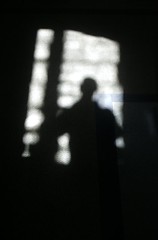mutheuomena kai legomena
…we have to re-examine the representation of the king’s two bodies. This, as formulated in the Middle Ages, was based upon the notion of the two bodies of Christ and, in sixteenth-century England, generated the juridical fiction that the king was two persons in one, on being the natural king, a mortal man who was subject to time and to common laws, who was vulnerable to ignorance, error and illness, and the other being the supernatural king, who was immortal, infallible and omnipotent within the time and space of the kingdom. […] As we read Michelet, it becomes apparent that, over and beyond this representation, it is the natural body which, because it is combined with the supernatural body, exercises the charm that delights the people. It is insofar as it is a sexed body, a body capable of procreation and of physical love, and a fallible body, that it effects an unconscious mediation between the human and the divine; the body of Christ, although mortal, visible and fallible as well as divine, cannot ensure that mediation because, whilst it indicates the presence of God in man, it cannot fully vindicate the converse: the presence of man and of the flesh in God. By breaking with the argument which derives the human monarchy from the divine monarchy, Michelet uncovers an erotico-political register. In his view, that register is, no doubt, established simply because religion has put love in the place of Law [...]
Claude Lefort, Democracy and Political Theory, Polity, 1988, p.244-45


<< Home